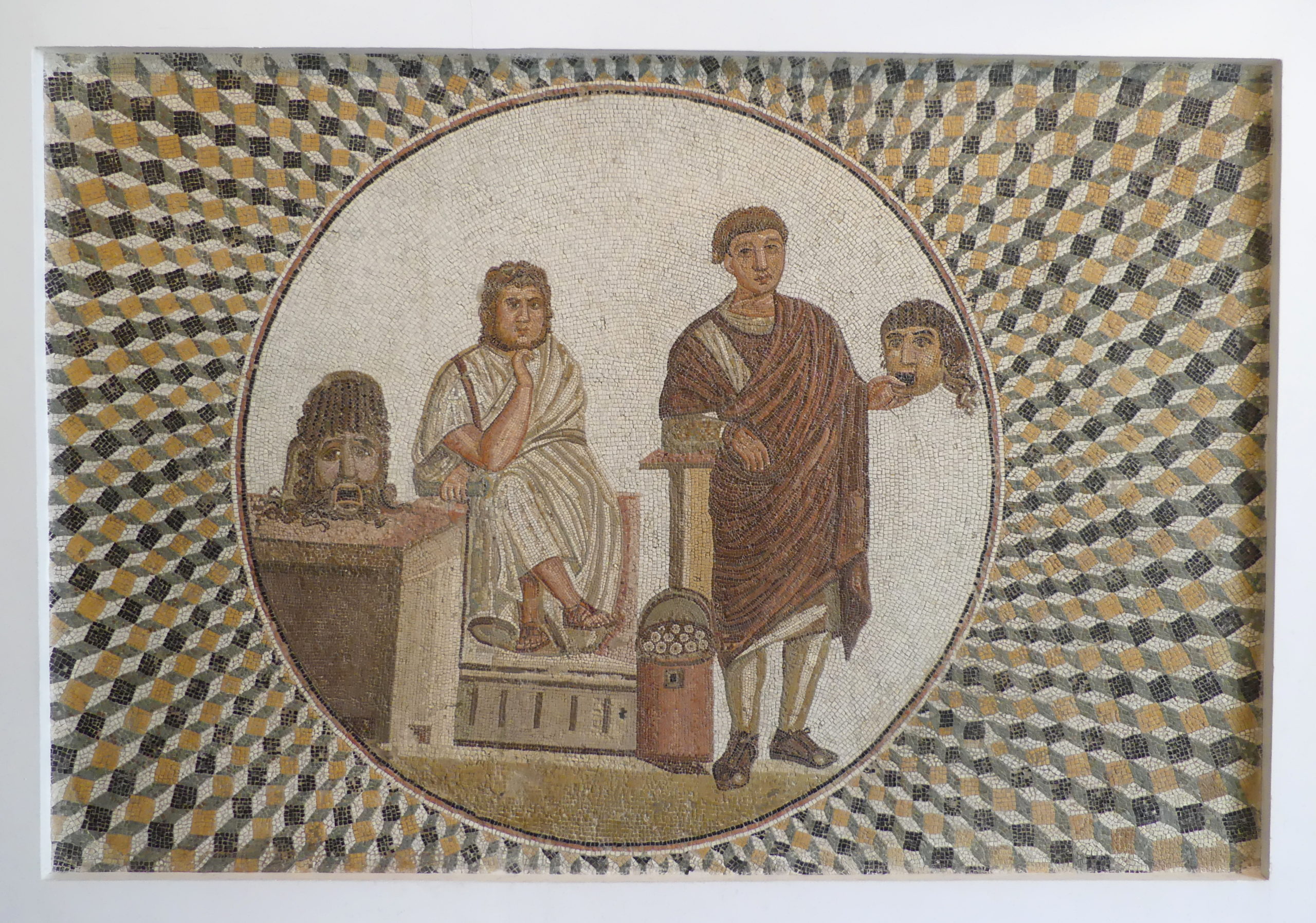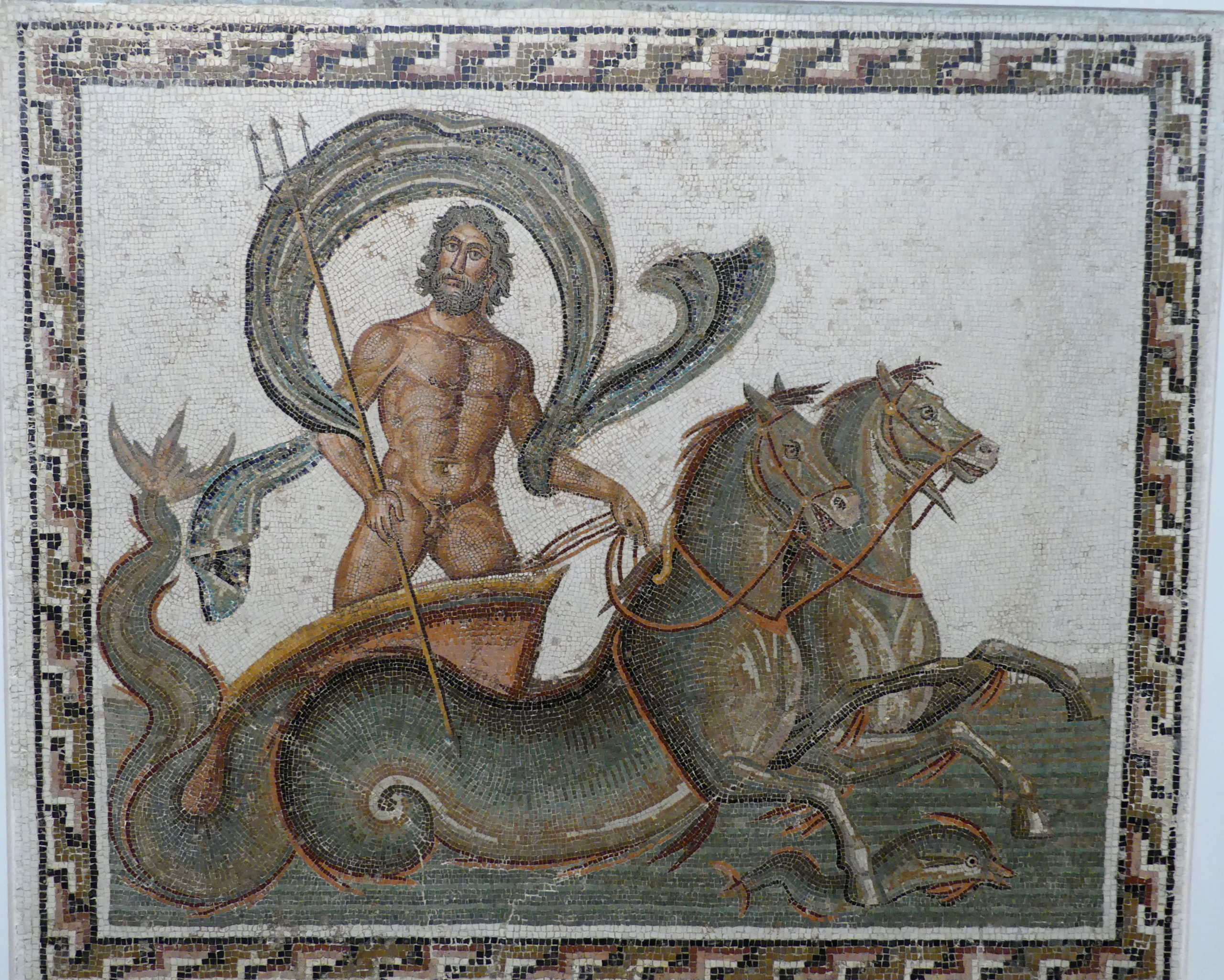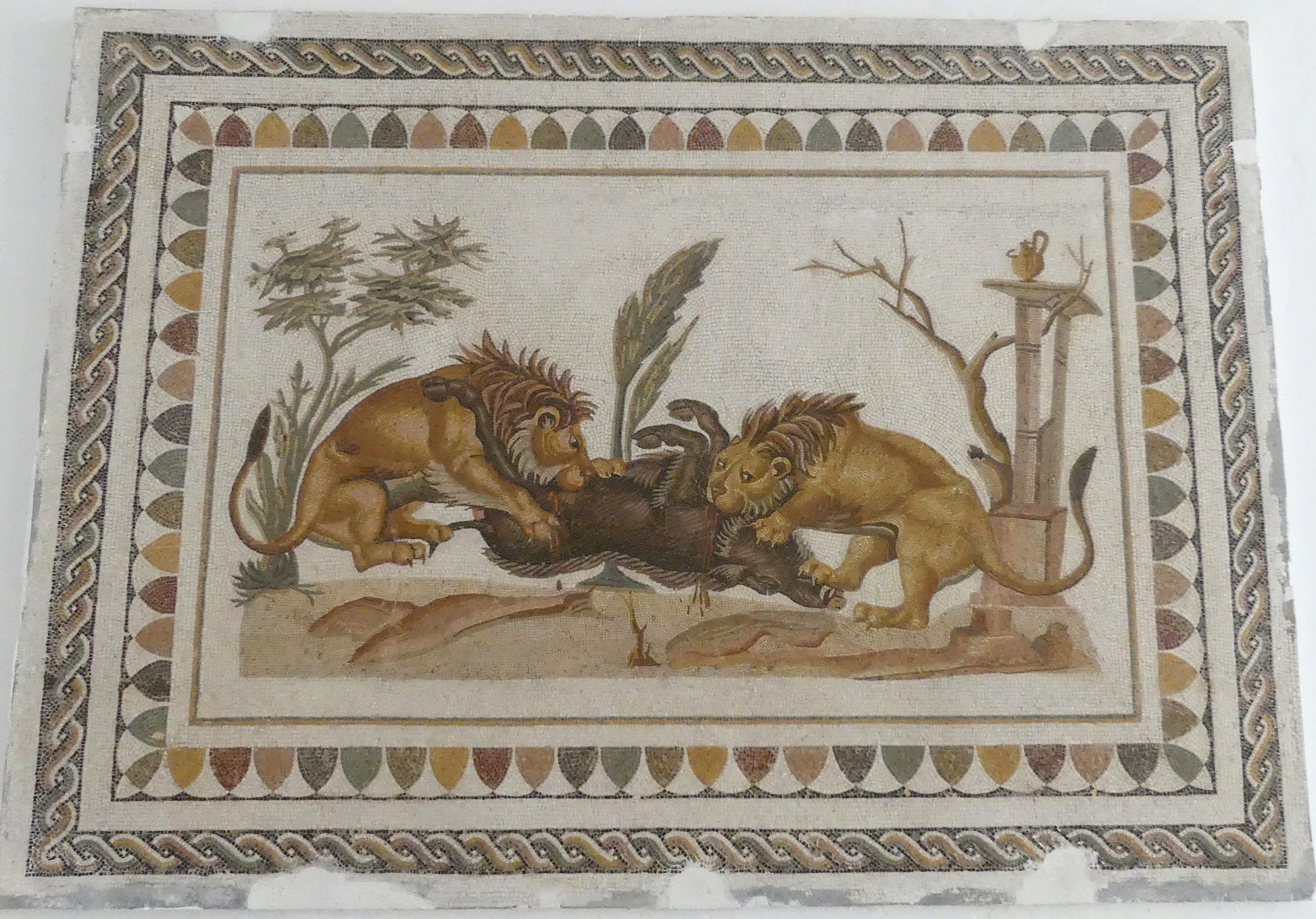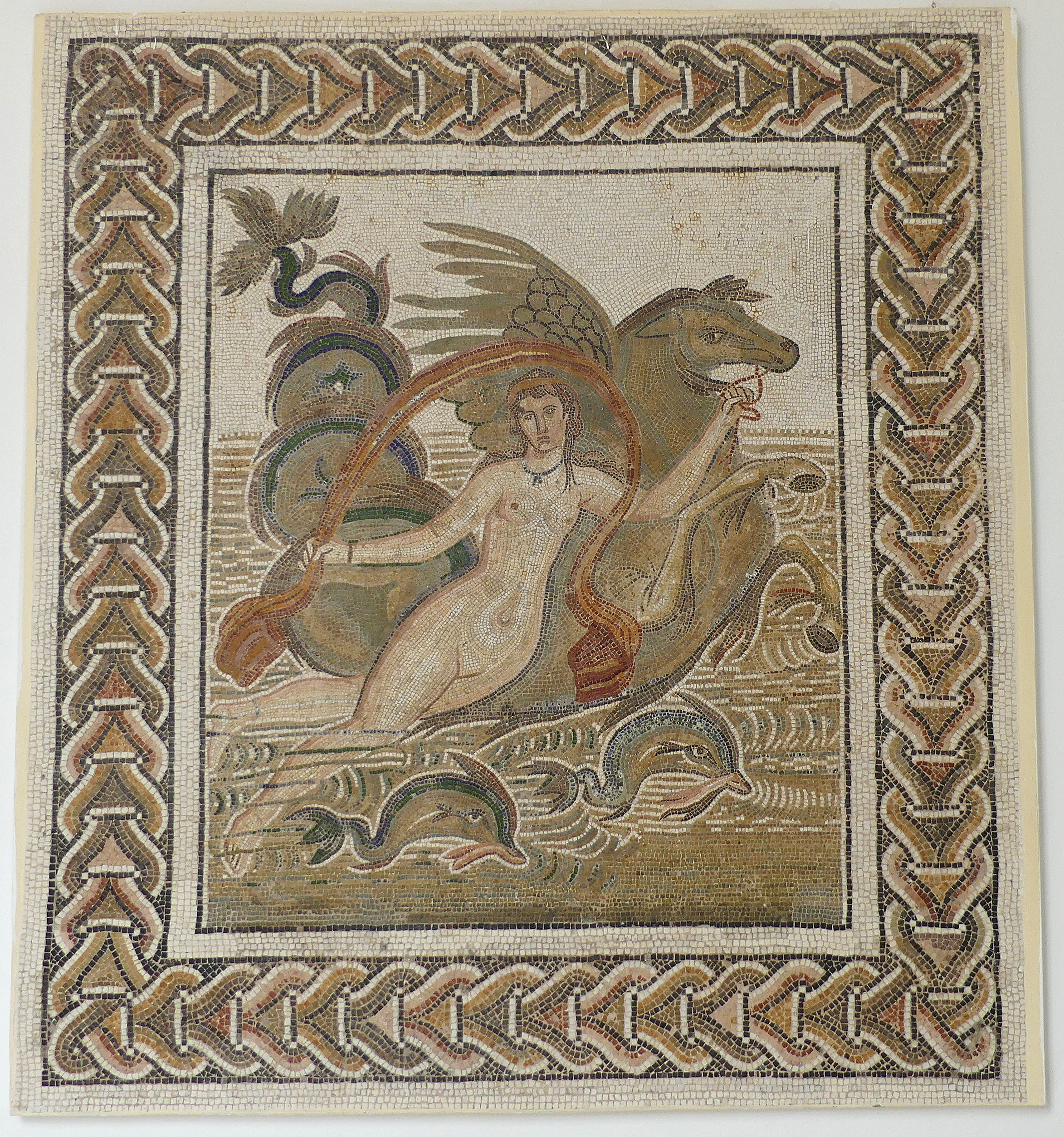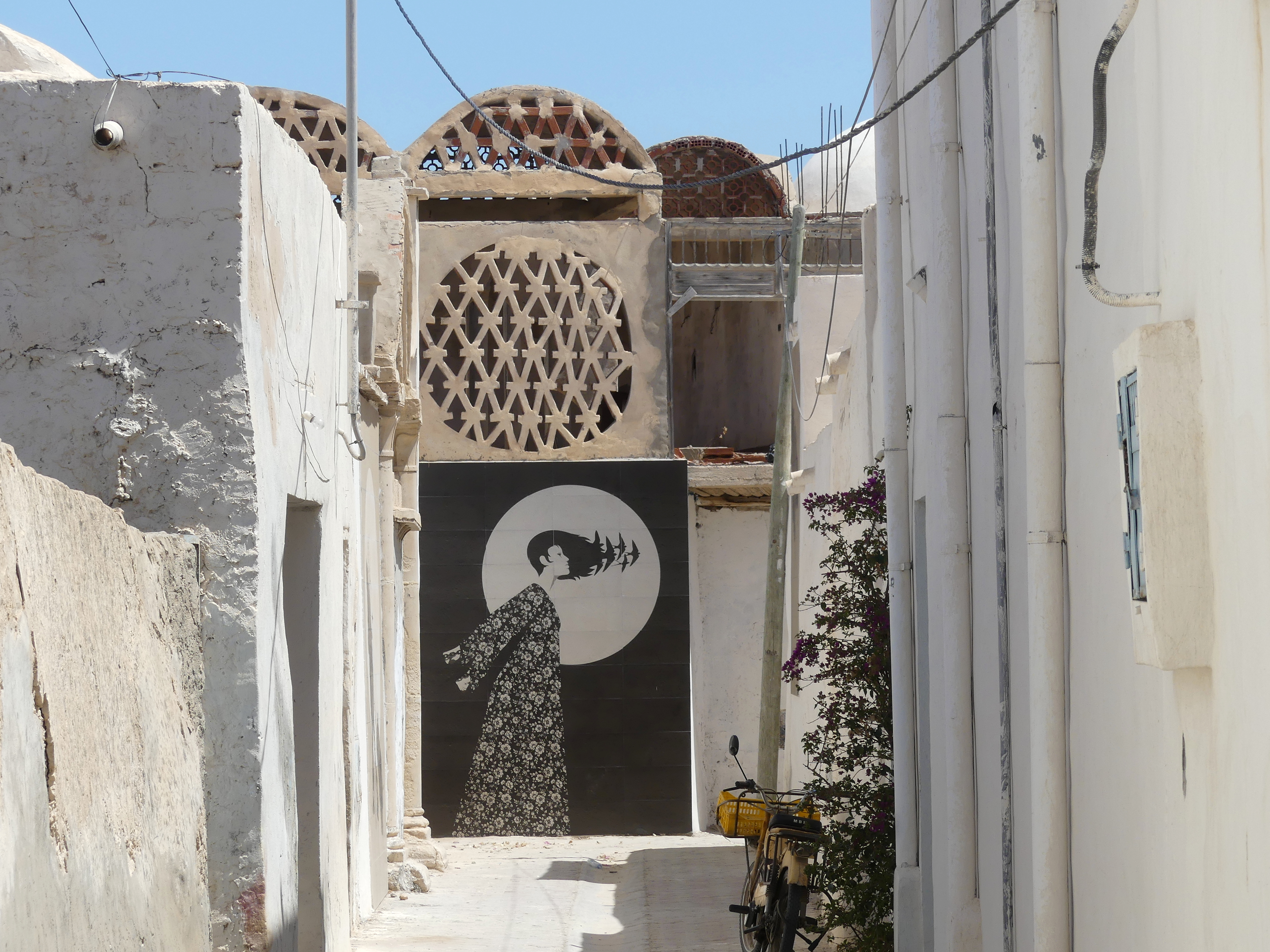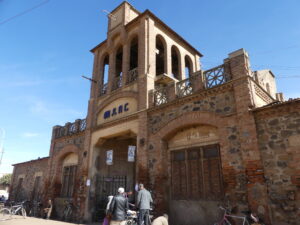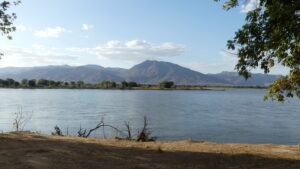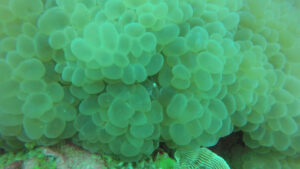In brief: Tunisia harbors a treasure of antique mosaics, displayed in its museums and in situ at resurrected villas. Here’s a lush sample.
The artist conceives a design to fit the interests of a patron and the floor space available. The artisan makes the design come alive, stony pixel by stony pixel, tone by tone. The results, as we saw in Roman and Byzantine mosaics across Tunisia, are astounding artworks from millennia past.
The principal museum of Tunis, the Bardo, remains closed due to political infighting, but what marvels we saw in others, especially at Sousse down the coast and at El Jem, the home of the massive Coliseum. These are truly just a sample of all the incredible pieces we saw, so enjoy the masterworks we selected.
You can click on any image to zoom in, examining how both artist and artisan create subtle effects with their tiny pieces of stone.
They laughed, they cried, they got dizzy. A dramatic actor and a comedian practice their crafts amid a whirling, kaleidoscopic frame. (Sousse)
Nancy draws inspiration from this interlocking depiction of the Nine Muses of the arts. And this was not even the largest of the mosaics to view. Though they were mounted on walls, the mosaics all were flooring once for the ancient villas of the region. (El Jem)
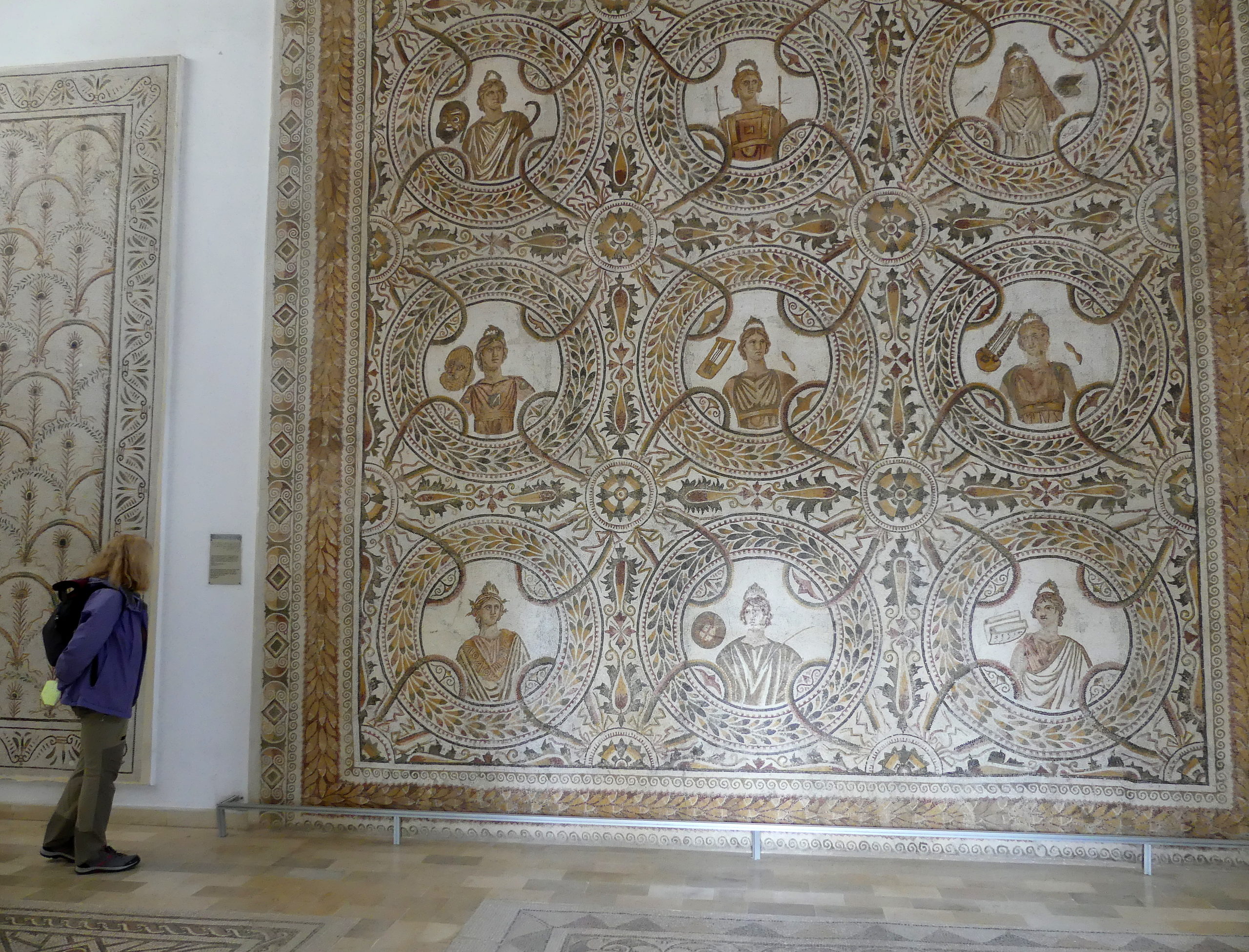
Something completely different in 3D: a bath-sized baptismal font from the 6th century. Decorated with animals and geometric objects, the steps lead down to seats within the font and a Maltese cross in the lower circle. Surely this polychrome vessel with limestone and glass tiles enticed many to be baptized. (Sousse)
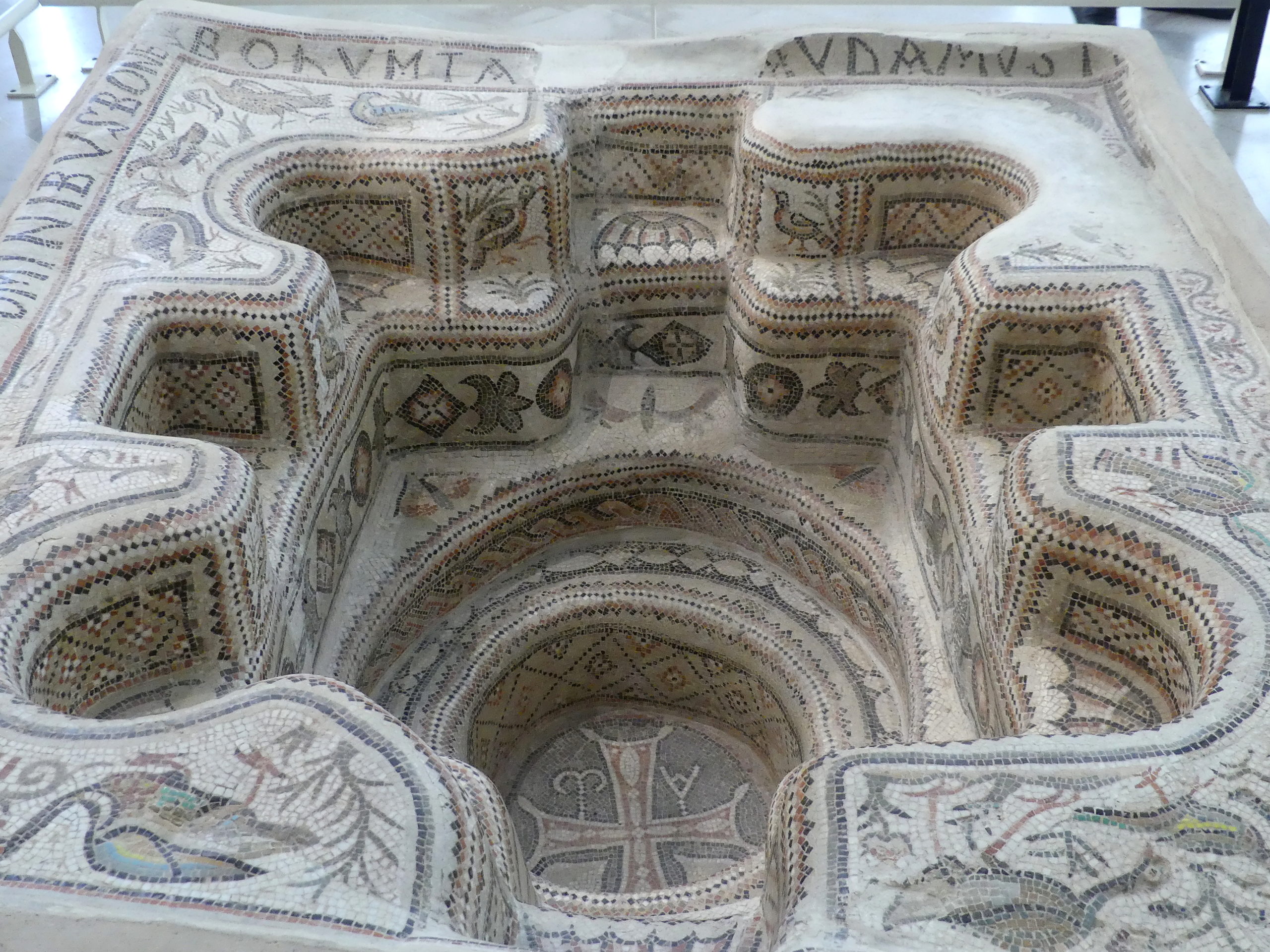
An effusive celebration of the vine (and the wine), full of charming, delicately drawn figures celebrating the triumph of Dionysus, the god of sensual pleasure being crowned in the center. The eight medallions around the huge mosaic illustrate the youth of the god, while the four panels around the center show randy sea-horses whisking Nereids away. As always, the drunken Silenus at center, who is being carried in the procession and restrained by cherubs, warns of the dangers of excess. It was also one of the finest mosaics of flora we saw. Small but delicately drawn animals appear in various places and a bit of erotica appears at the bottom left. (El Jem)
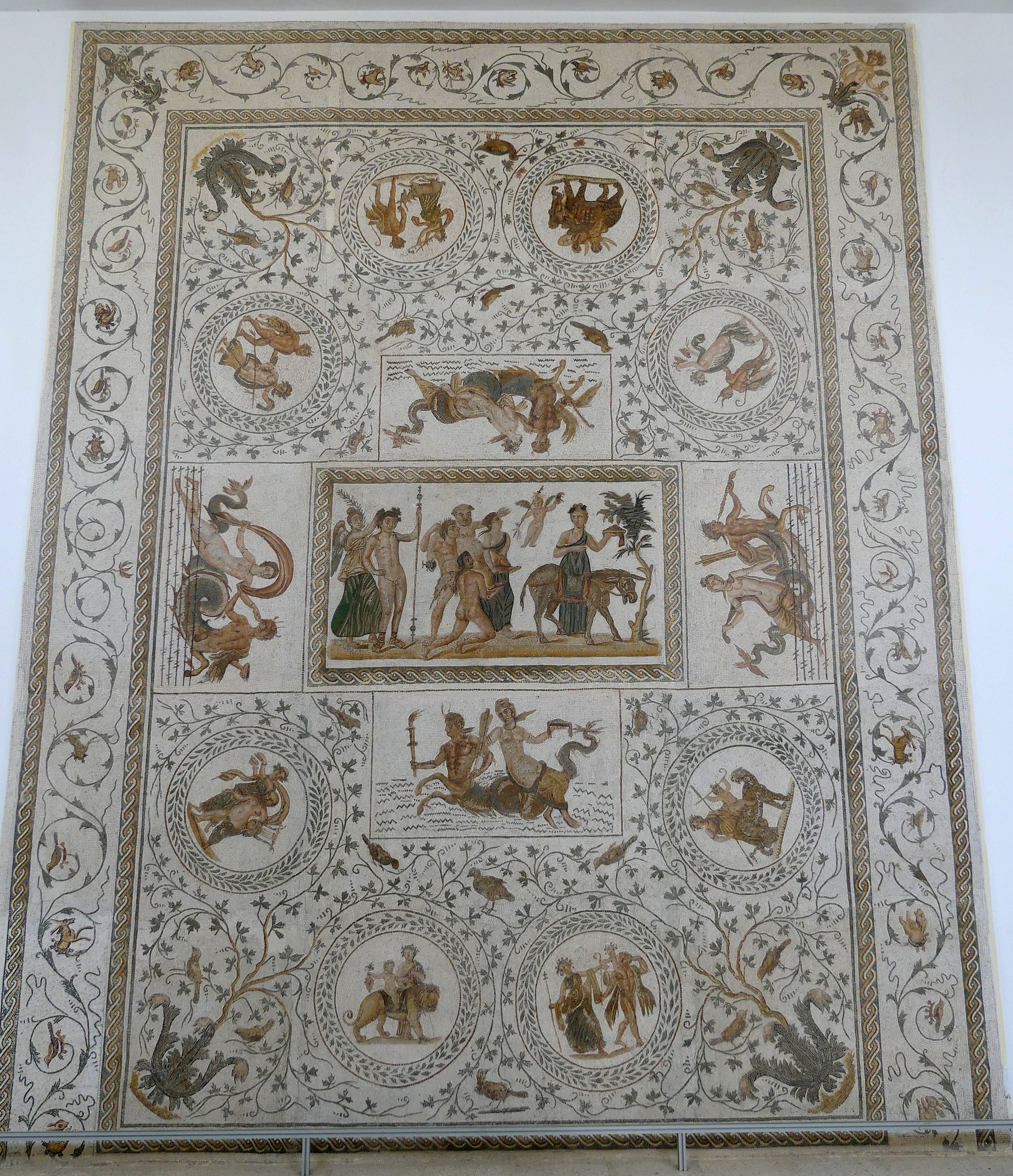
Most mosaic scenes are static, but this attack on a boar by two lions is powerfully dynamic, and nearly photo-realistic. Or is it a pre-cursor of Henri Rousseau? (El Jem)
Why we had so much trouble choosing mosaics to show…this is one of several such rooms stuffed with gorgeous tilework. (El Jem)
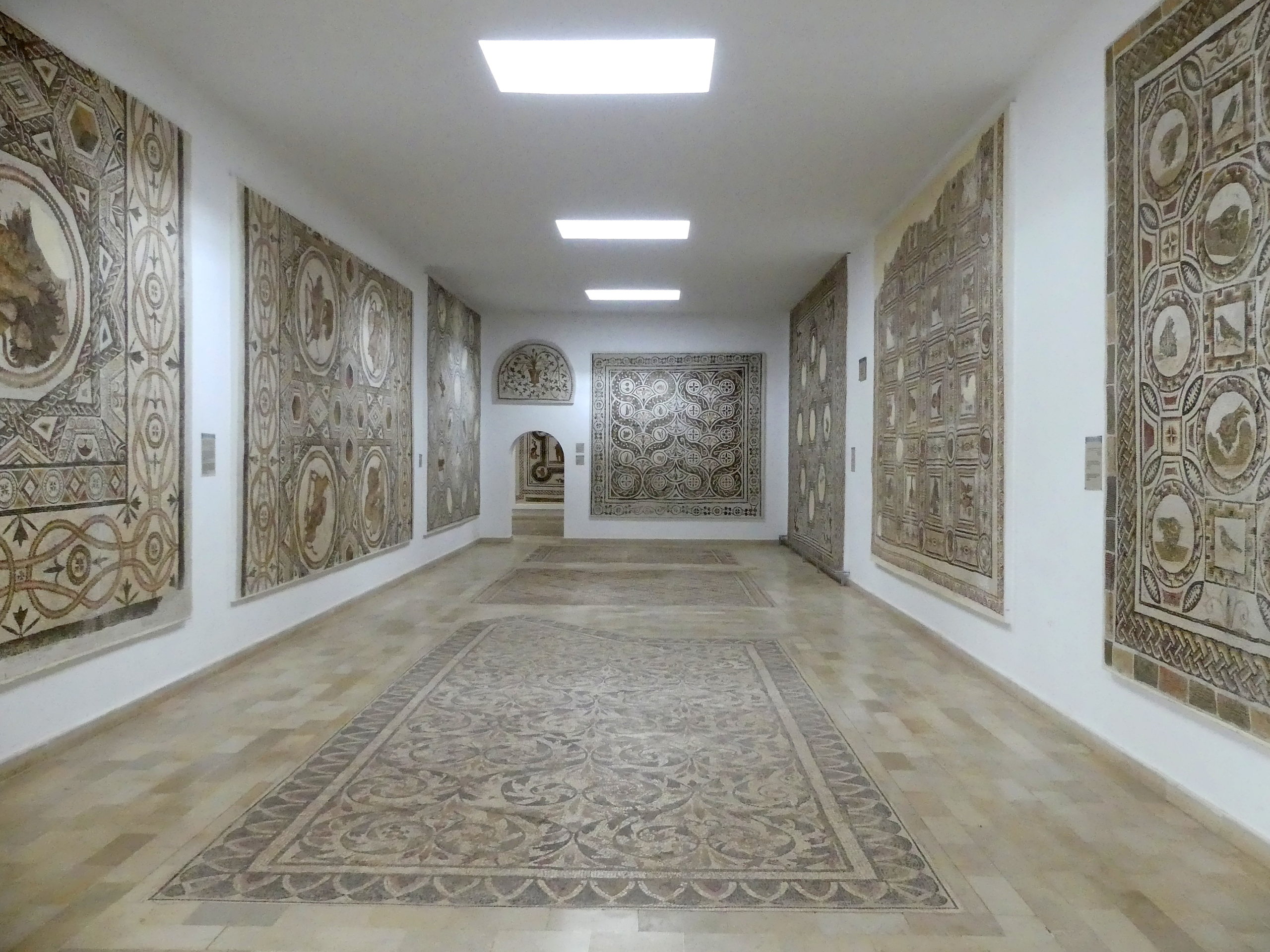
A Botticellian nymph is swept away by a Titian sea-horse with a huge corkscrew tail, as a pair of dolphins frolic in the frothy sea. (El Jem)
Not so much a fishing scene, despite the fishermen, but a catalog of the fish to be found in the nearby Mediterranean. Such celebrations of nature’s bounty were common. (Sousse)
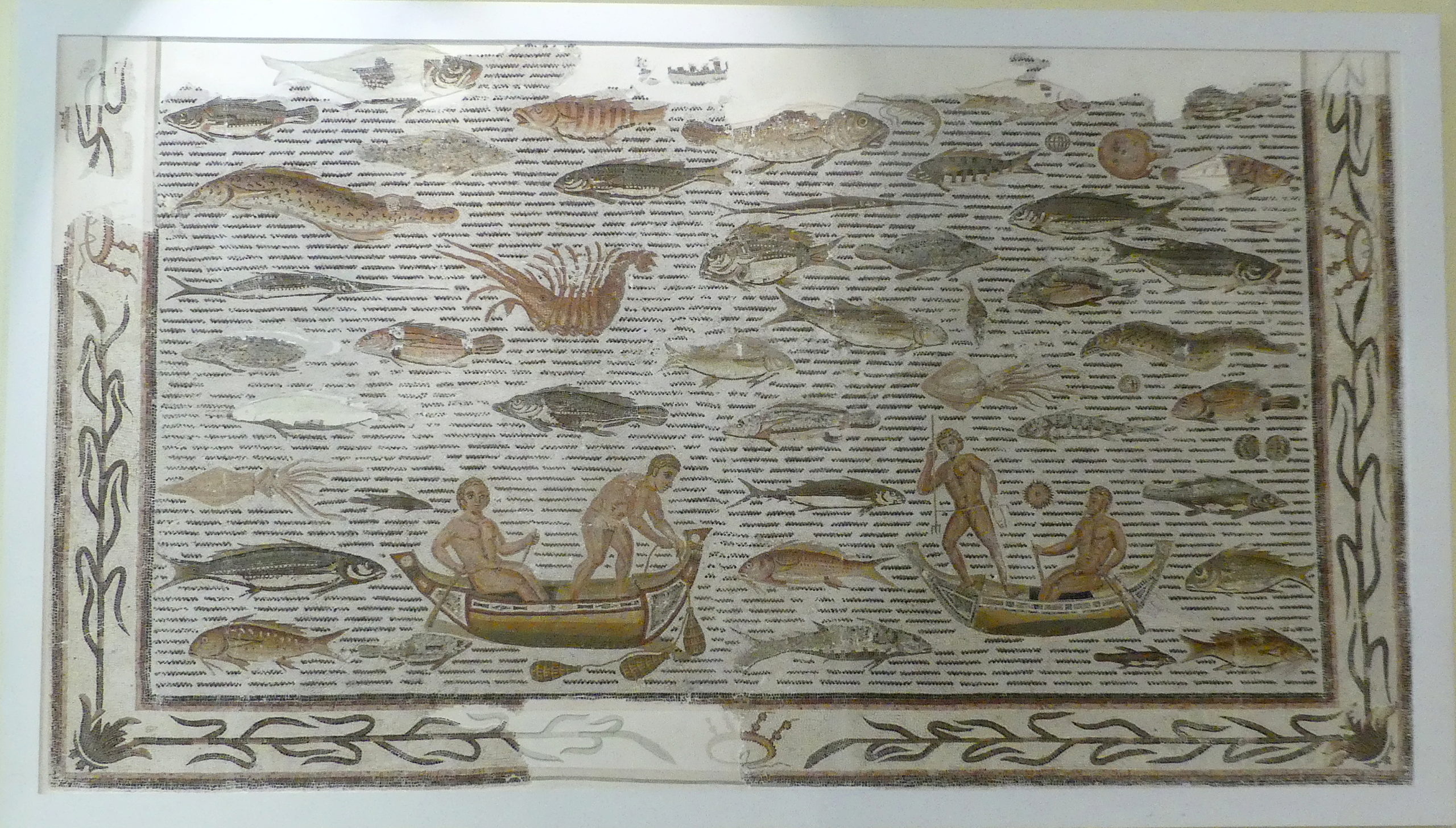
Sporting lobster-claw horns and, yes, wavy hair, this huge portrait of a very pensive Neptune was taller than any of us. (Sousse)
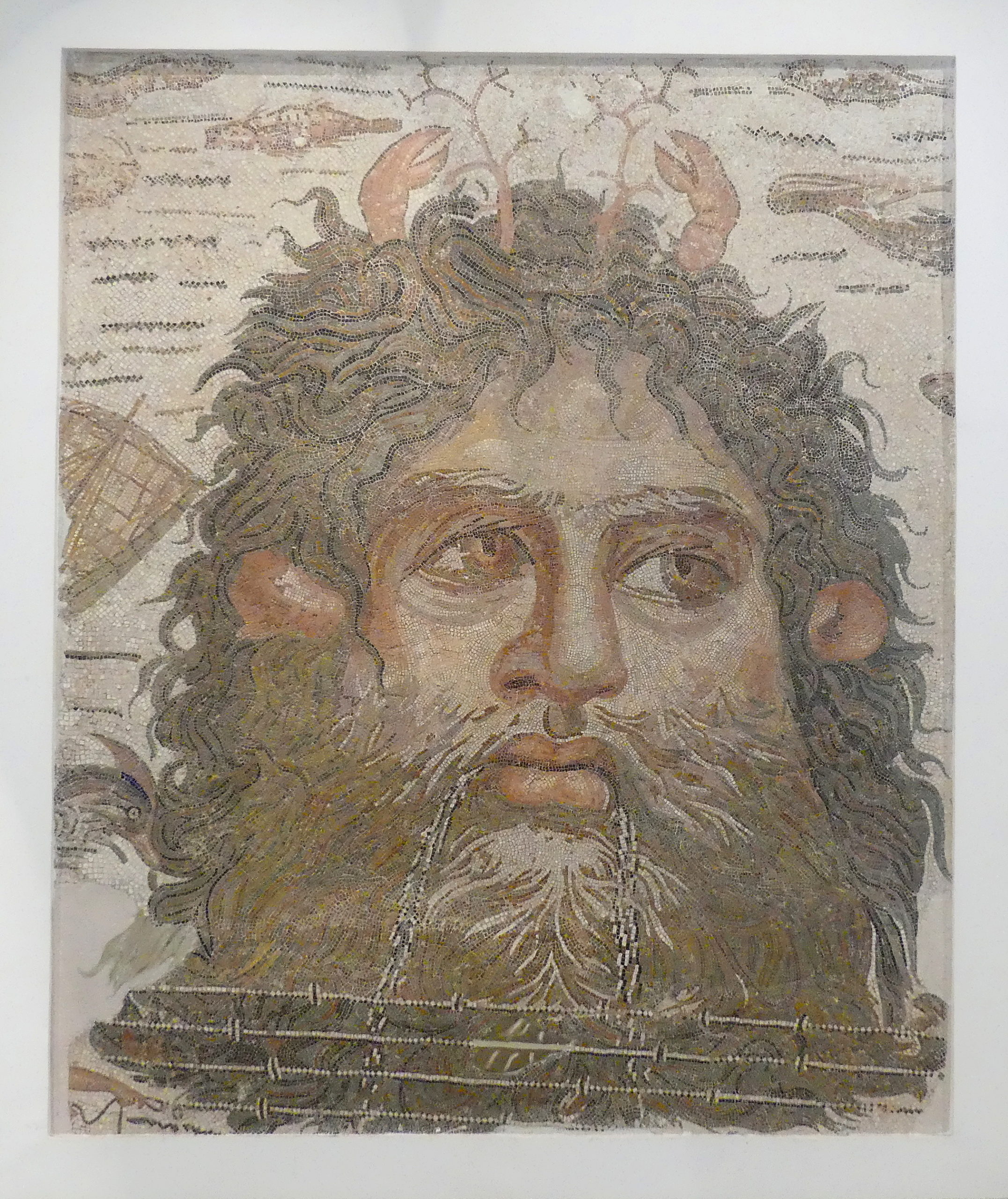
Lions and tigers and…chariots, oh my…with lots of vines in the decoration. This triumphal procession of Dionysus centers on a joyous tambourine player. (Sousse)
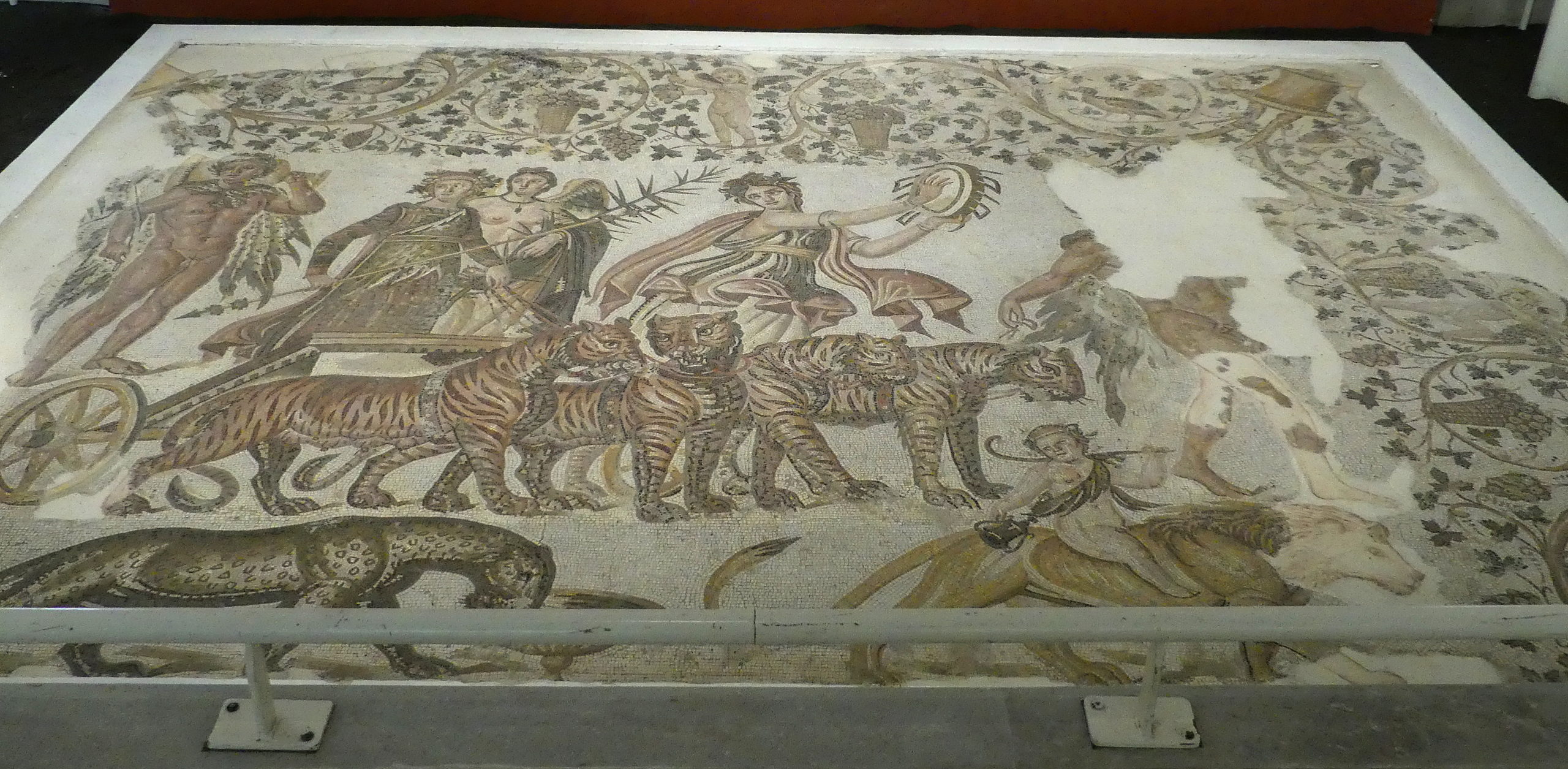
As large as it looks, this mosaic was the floor of a triclinium, a dining area with two section for divans at the side. It celebrates hunting (with the four hunters at the top) and the animal life of the country, with gamboling horses, ostriches, stags and various types of antelope. Each is vividly realistic, though depicted with the usual tiny stones. (Sousse)
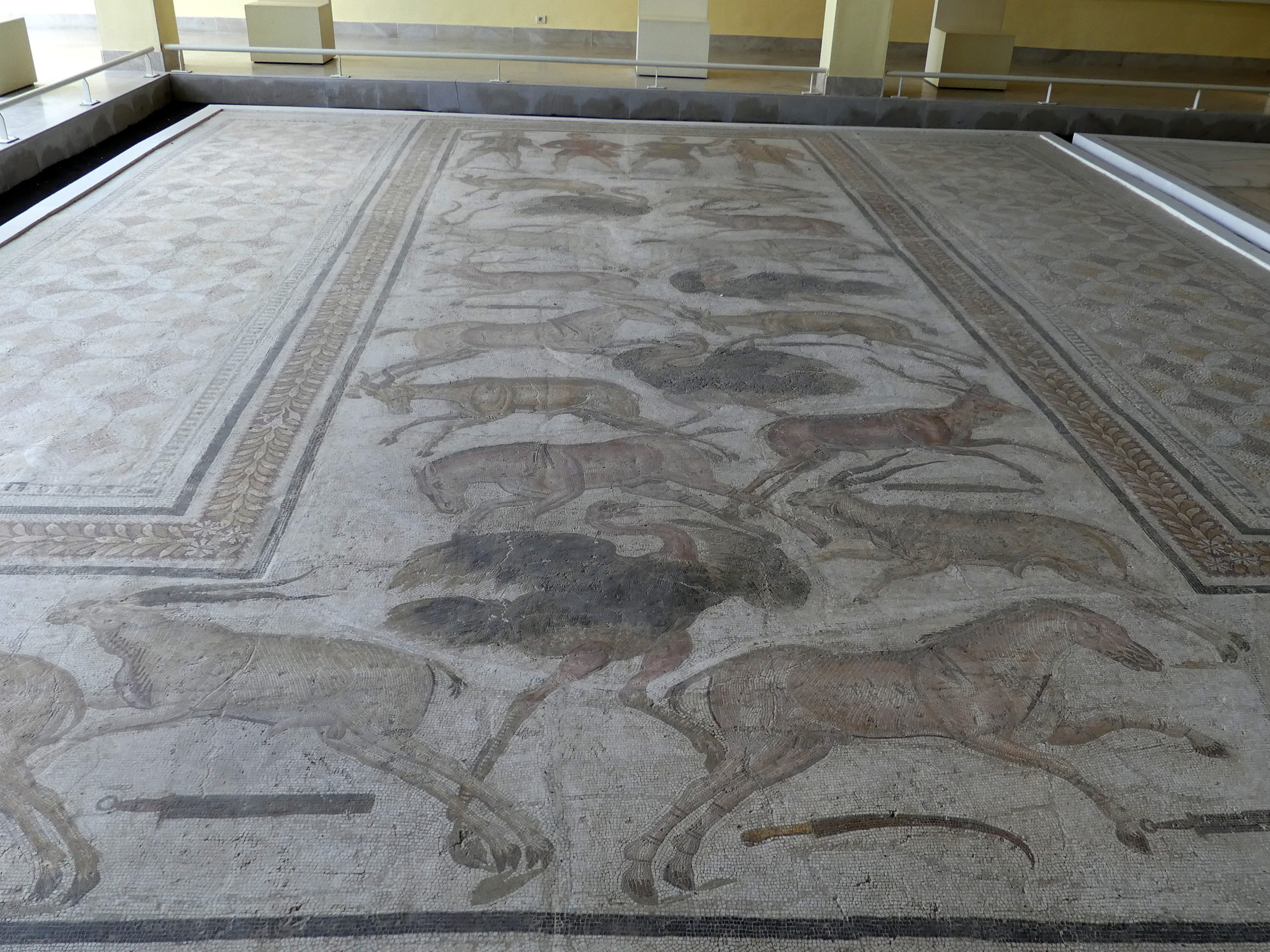
A kind of event poster found in a villa, but perhaps used in public before the event. It shows several named hunters you don’t want to miss: Bullarius, Crispinus, and Hilarinus, each of whom earned 1000 denarii for demonstrating their skills in the arena. Also featured in tile is the event sponsor, Magirus, as well as the organizer, the society of Telegenii (whose name makes them sound quite ahead of their time). (Sousse)
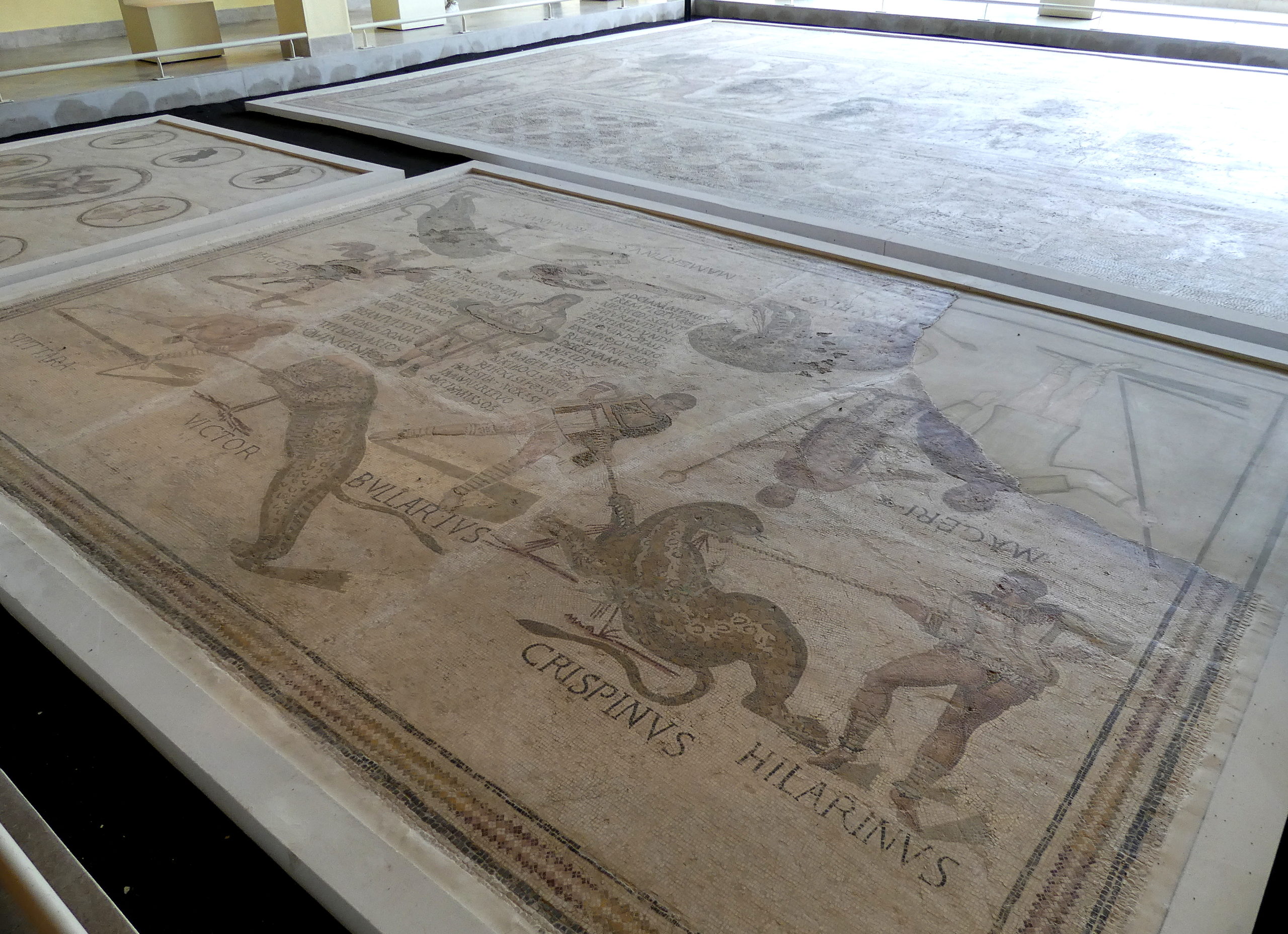
The art of love, with various forms of seduction, pursuit, and rejection. Similar floor coverings displayed the seasons and months, demonstrating the important role of agriculture in the wealth of villa owners. Apparently, lovemaking was equally interesting. (Sousse)
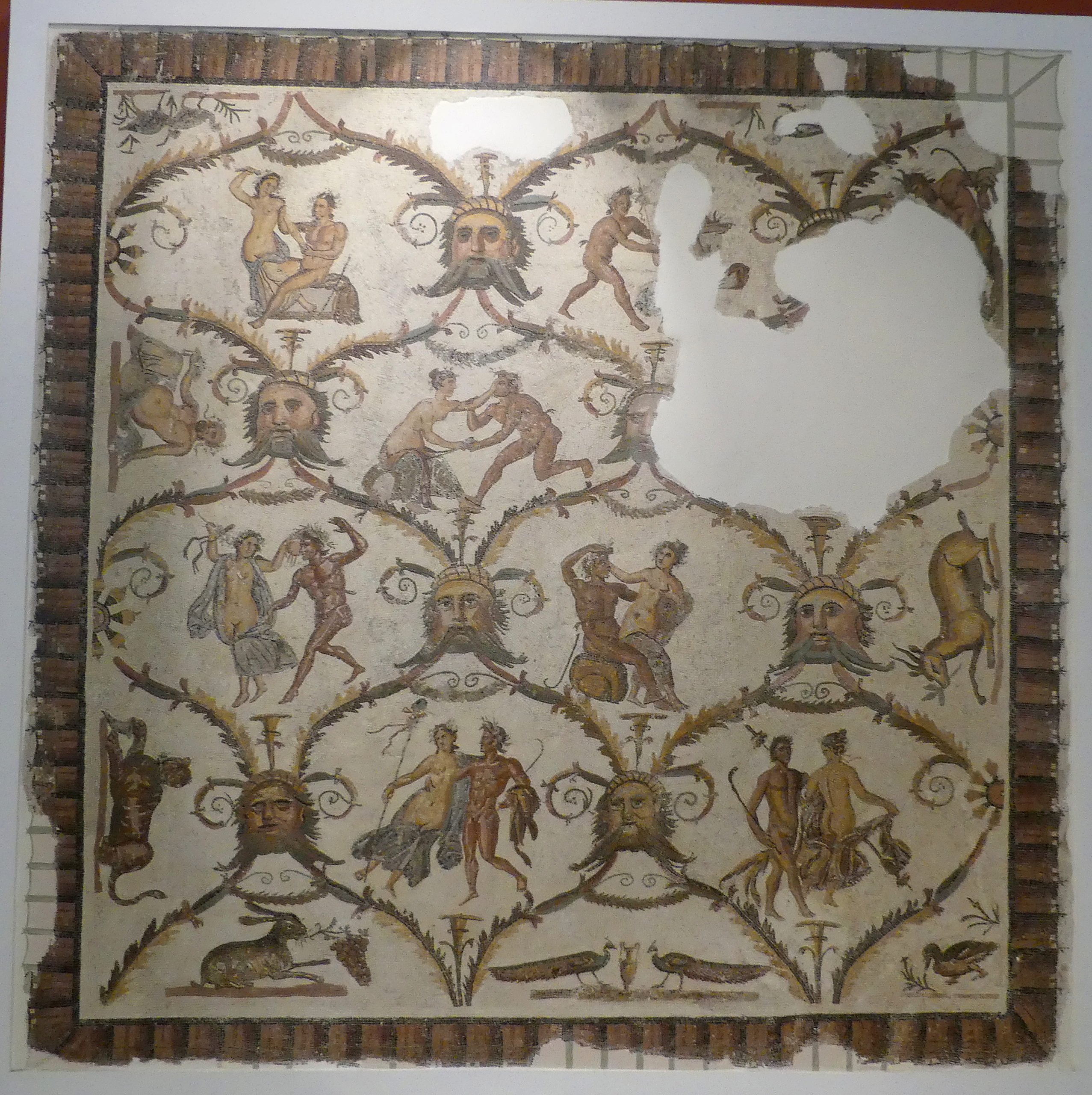
(To enlarge any picture above, click on it. Also, for more pictures from Tunisia, CLICK HERE to view the slideshow at the end of the itinerary page.)


